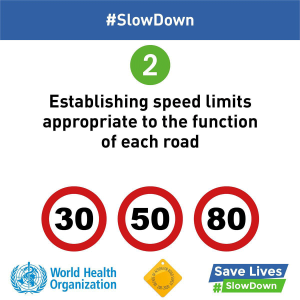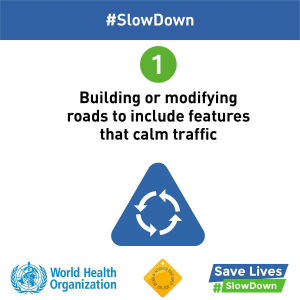
When learning to drive our instructor had told us to maintain a minimum speed while driving and to be considerate of the others on the road, and to wear our seatbelts.
Wearing a seat-belt reduces the risk of death among passengers.
Wear your seat-belt, #BuckleUp. https://t.co/rYS6gOR0kE #RoadSafety pic.twitter.com/76M3OHuTrM— WHO (@WHO) May 14, 2017
This little nugget of information only seemed to last till we get out the license in our hands. Then throwing caution in the winds we drive (some of us).
This reckless driving, a part of it for the thrill, with a little mix of alcohol and the other part is our tight schedule.
Drink-driving increases the risk of a road traffic crash.
Don’t drink and drive.https://t.co/rYS6gOR0kE #RoadSafety pic.twitter.com/Z6ShfHnmsQ— WHO (@WHO) May 14, 2017
So today let’s take an oath to slow down, not only for our sake but also for those on the road. #SLOW DOWN
Global #RoadSafety week: Excessive or inappropriate speed contributes to 1 in 3 road traffic fatalities ?#SlowDown!https://t.co/h3STqYTUWk pic.twitter.com/EEhk8AUZvi
— WHO (@WHO) May 8, 2017
“Save Lives – #SlowDown”

This is the theme of the 4th United Nations Global Road Safety Week (UNGRSW) which will take place form the 8th of May 2018 to the 14th of May 2018. The #SlowDown campaign seeks to increase understanding of the dangers of speed and generate action on measures to address this major risk for road traffic death and injury.
Countries successfully reducing road traffic deaths have done so by prioritizing safety when managing speed. Among the proven strategies to address speed include:
- Setting and enforcing speed limits appropriate to the function of each road, for example
2. Setting and enforcing a maximum speed limit of 50 kilometres per hour in urban areas;

3. Setting and enforcing a maximum speed limit of 30 kilometres per hour on roads with high concentrations of pedestrians, cyclists and motorized traffic;
4. Enforcing speed limits through the use of automatic speed cameras;

5. Installing intelligent speed adaptation technology in vehicles;

6. Building or modifying roads to include features that limit speed such as traffic lights, roundabouts and speed humps.

The Fourth UN Global Road Safety Week seeks to increase understanding of the dangers of speed and generate action on measures to address speed, thereby saving lives on the roads.

As the # suggests, let’s slow down. Statistics show that a 5% cut in average speed can result in a 30% reduction in the number of fatal road accidents.
While the official page of the UNGRSW (www.unroadsafetyweek.org) offers the visitors to make an oath #SLOWDOWN, let’s us too take this pledge, not just on the page but to apply it in our daily lives as well.
Let’s educate our kids and ourselves once again on the rules to follow while on the road, whether you are walking or you are driving.

Post Your Comments